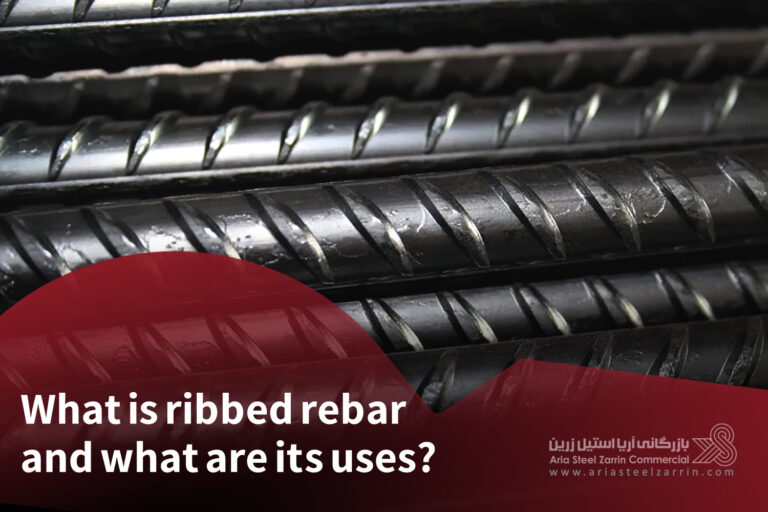Generally, two types of rebar are available in the country’s steel market in bulk, and customers choose and buy this product from simple (plain) rebar and ribbed rebar according to their needs. Meanwhile, ribbed rebar is one of the types of this product that is produced in different plants and is mostly used in the construction industry. This product is one of the most widely used steel products and has returning customers, especially in the field of construction.
Features of steel ribbed rebar
Ribbed rebars are a type of rebar that have protrusions called treads or teeth. Treads solve the problems of rebar sliding so that the rebar can have more stickiness and strength with concrete. These types of rebars account for a large part of construction materials and are considered one of the main materials and materials used in construction. This issue causes the price of rebar to have a significant impact on the cost of buildings.
Characteristics of ribbed bars
The three main types of rebars produced in the country are known as A2, A3 and A4. These rebars are all ribbed, but they differ in hardness, flexibility and type of application. The tread shape is also different in these three models. Among these models, A3 rebar is the most used in reinforcement and it is also called longitudinal rebar.
Among these models, the carbon content in the steel used in the A2 rebar is much lower, and this model has more flexibility. Ribbed rebar A3, like the A2 model, has the ability to bend. Although the amount of this feature is less in the A3 ones. These two types are semi-hard rebars. In the meantime, A4 ribbed bars are considered hard types. Buildings constructed with this type are much stronger.
Applications of ribbed bars
Although ribbed rebars have different applications, the most common use of these rebars is in construction. Increasing shear stress, use in concreting the floors of structures and building walls, and increasing the strength of concrete in the building in order to strengthen the foundation are among the factors that make rebars used in building construction. In fact, ribbed rebar is used for the high strength of concrete, and the ribbing of the rebar makes it completely stick to the concrete and cannot be removed from the concrete.
Also, in addition to construction, this rebar is used in the manufacture of barbed wire and tow wire, metal mesh, springs and some other steel products.
How to produce ribbed rebar
Steel ingot, which has a certain amount of carbon content, depending on the rebar type, is considered the basic material for the production of simple rebar. First, the ingot is prepared for shaping at a temperature of 1100 degrees Celsius. The heated ingots are placed on the rolls and cut to the desired dimensions and shaped into rebars.
In the A2 type, treads are added to the rebar in the rolling stage, but in other types, the treads are added after the product cools down and using different molds. After treading, the rebars are cut into specified and standard lengths with the help of special scissors and are packed and ready for transportation.
Ribbed rebar in simple words
Generally, two types of rebar are available in the country’s steel market in bulk, named plain rebar and ribbed rebar. Although ribbed rebars have different applications, the most common use of these rebars is in construction.
The difference between ribbed bars is the amount of carbon used in the steel billet, which is considered the primary material for the production of bars. The main and widespread application of ribbed rebars is in building and construction industry.

